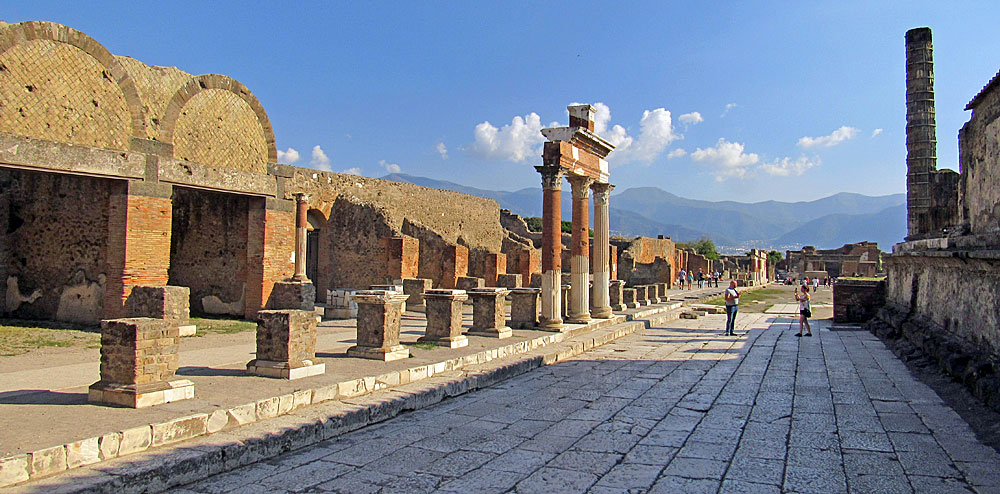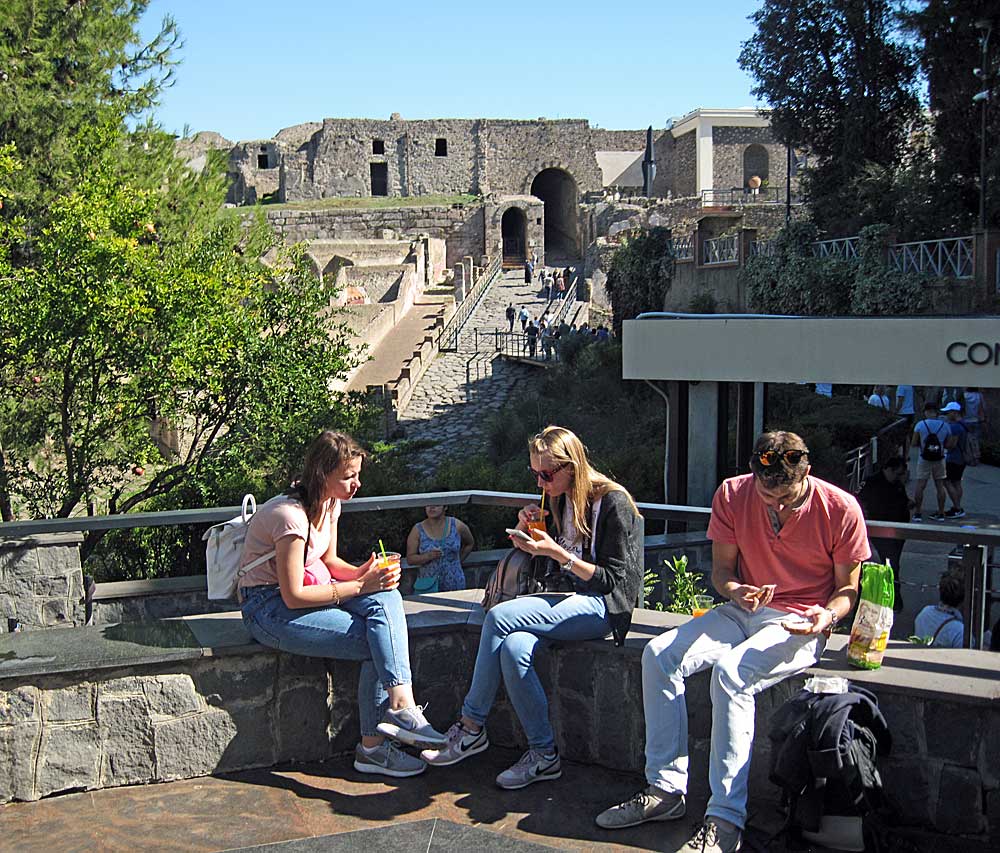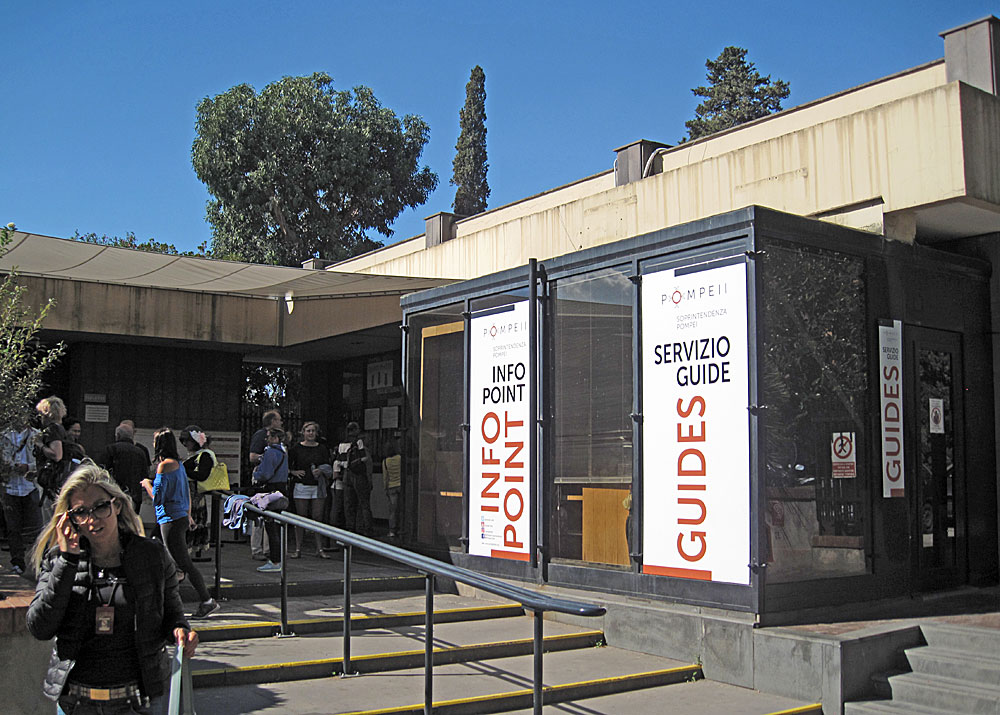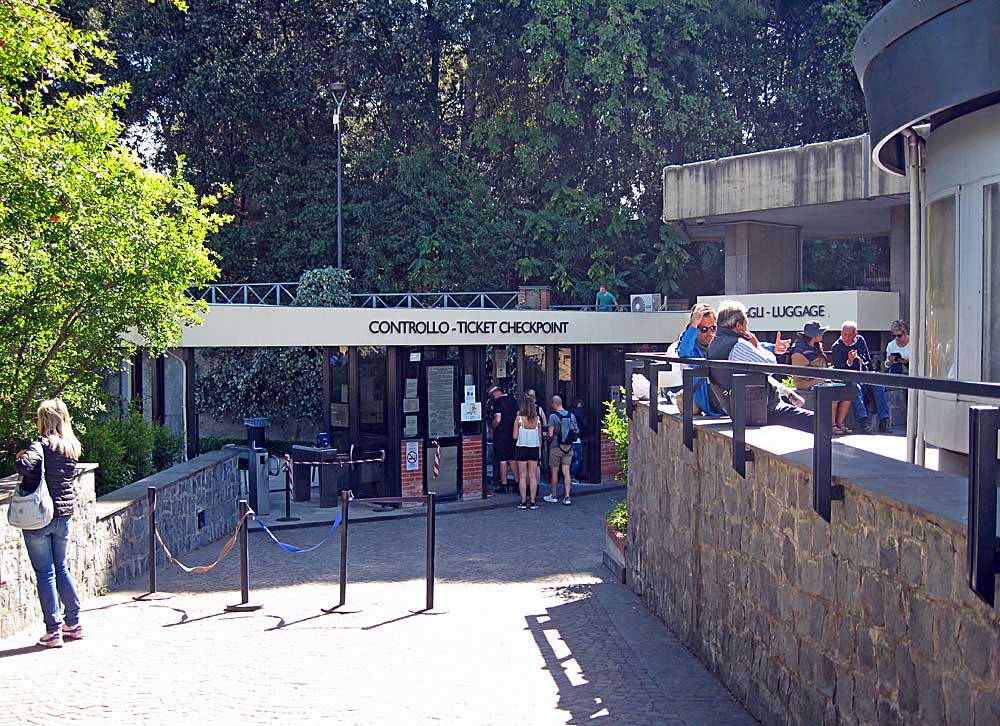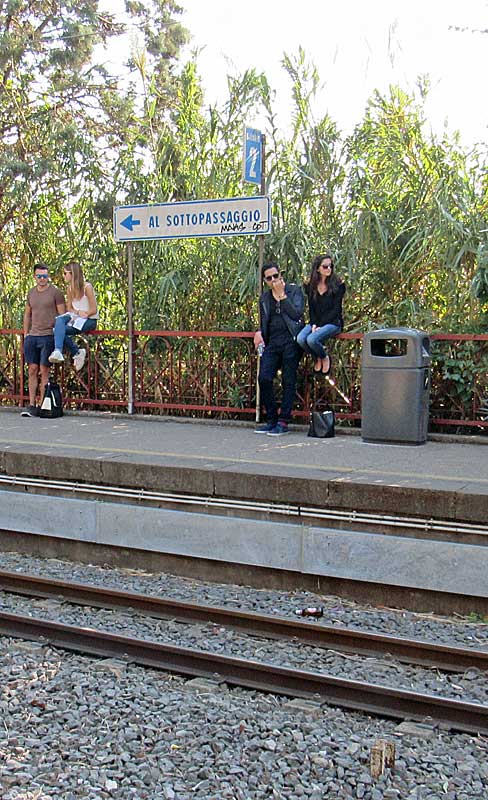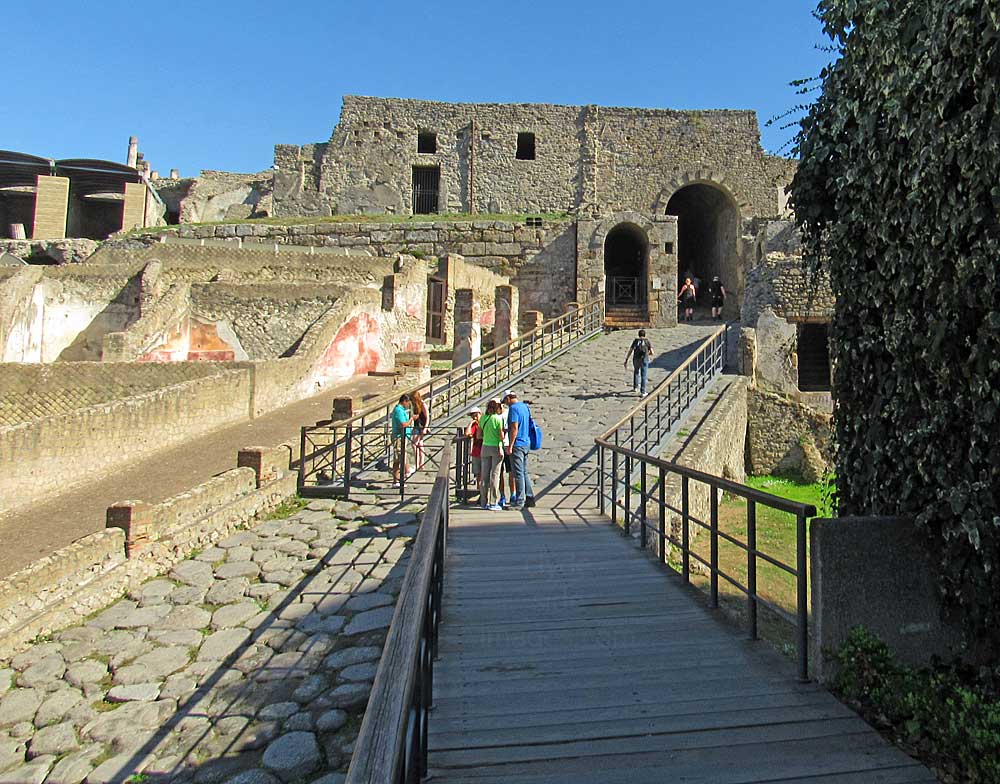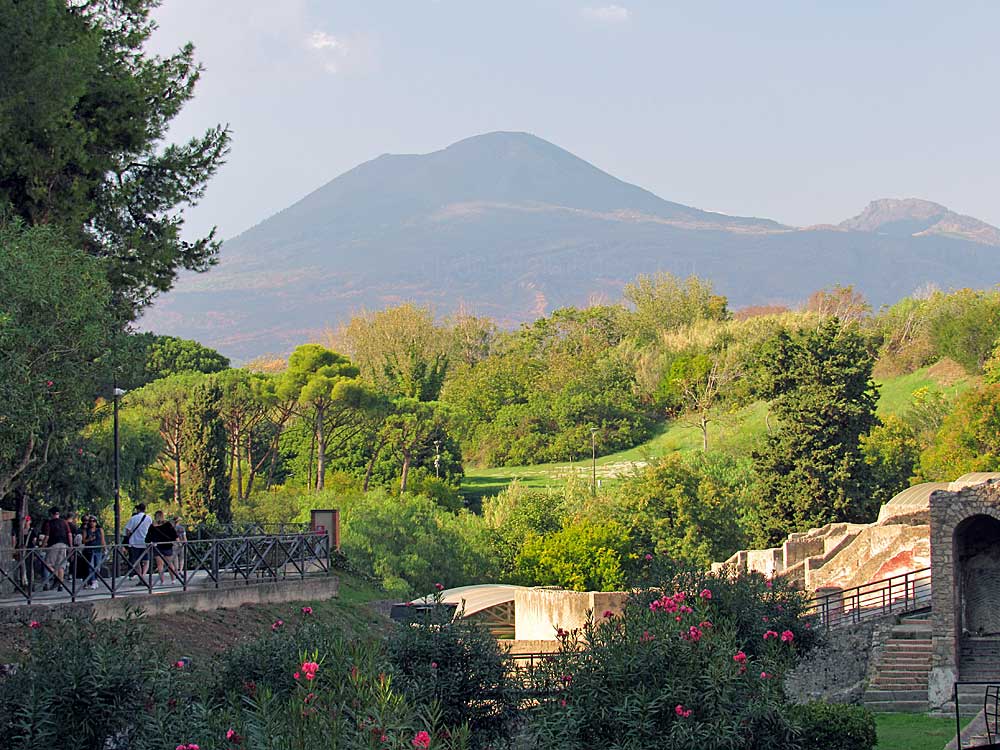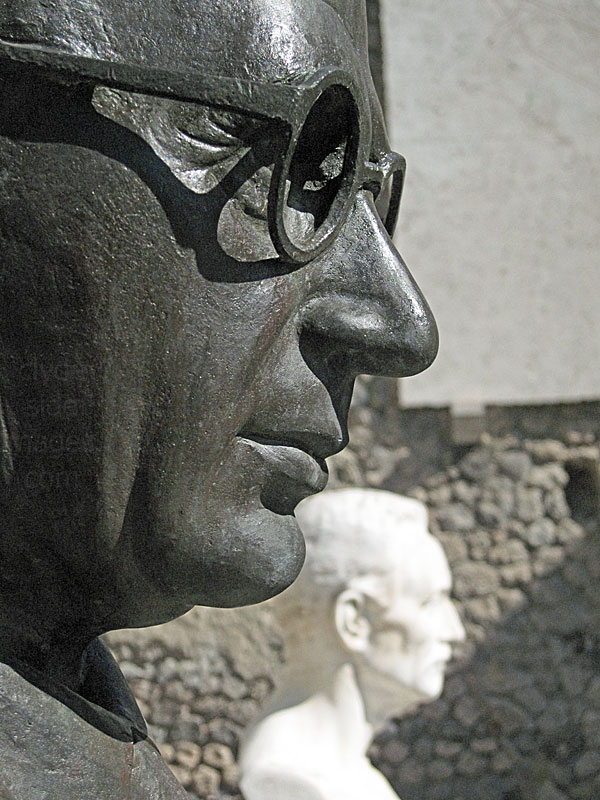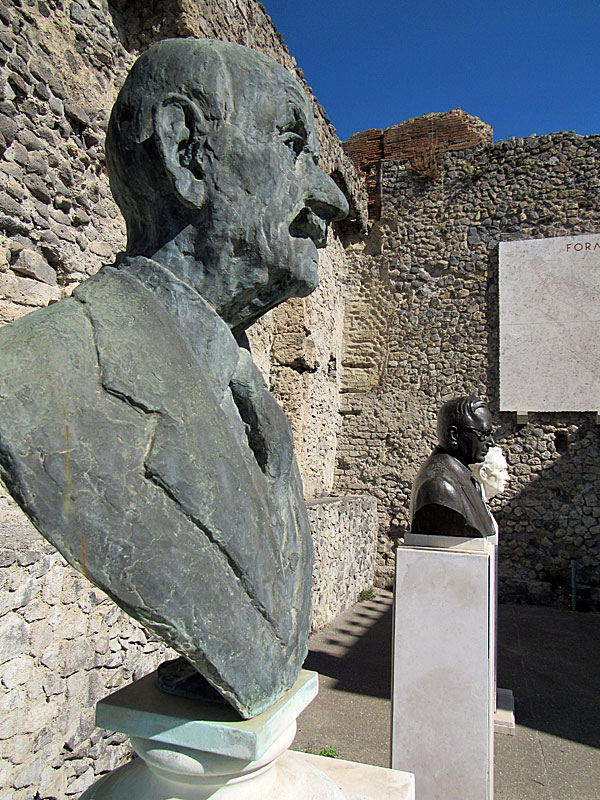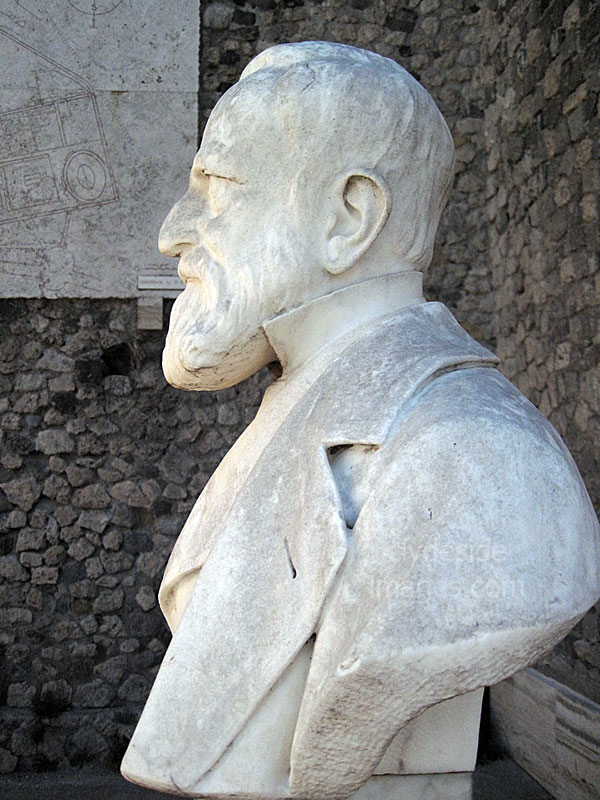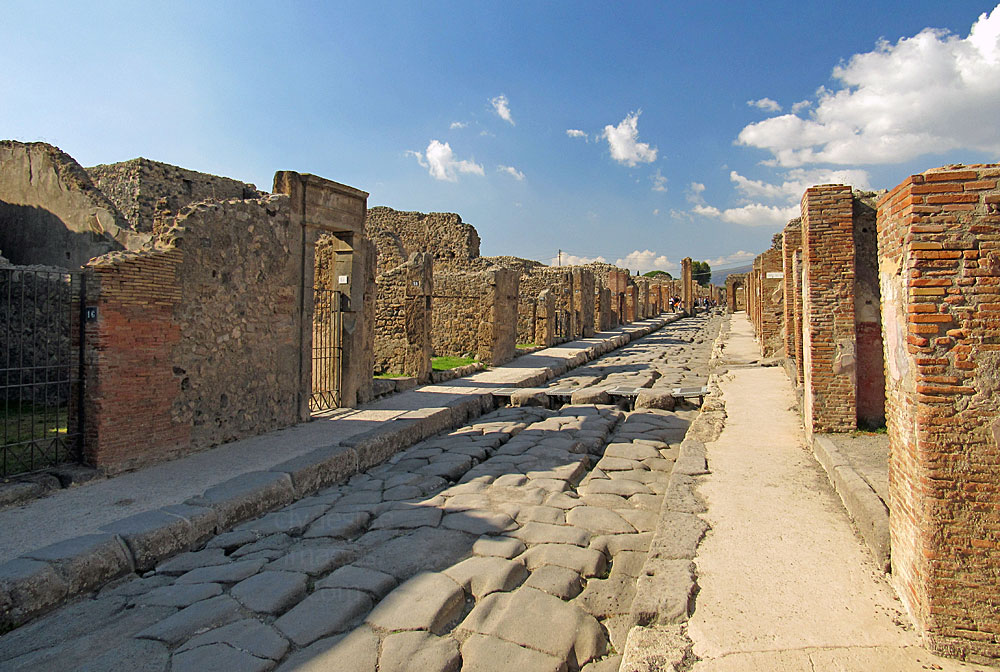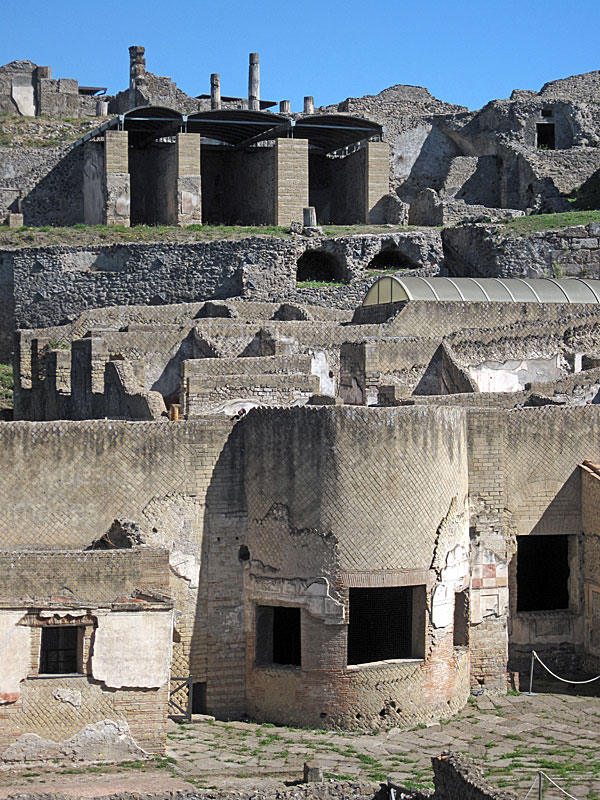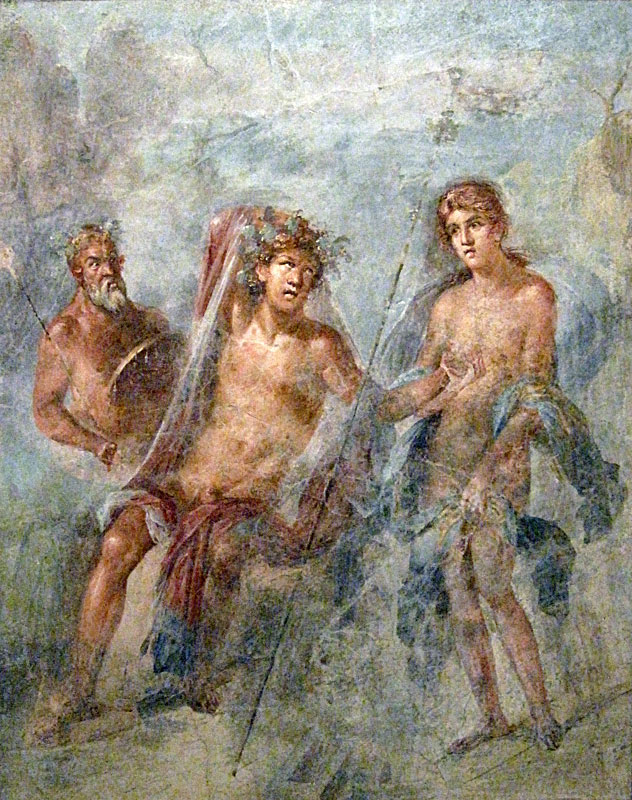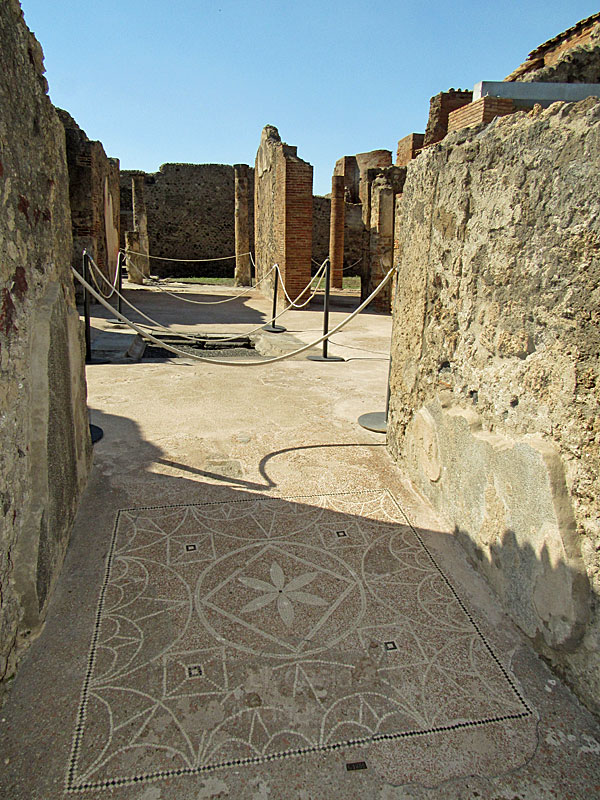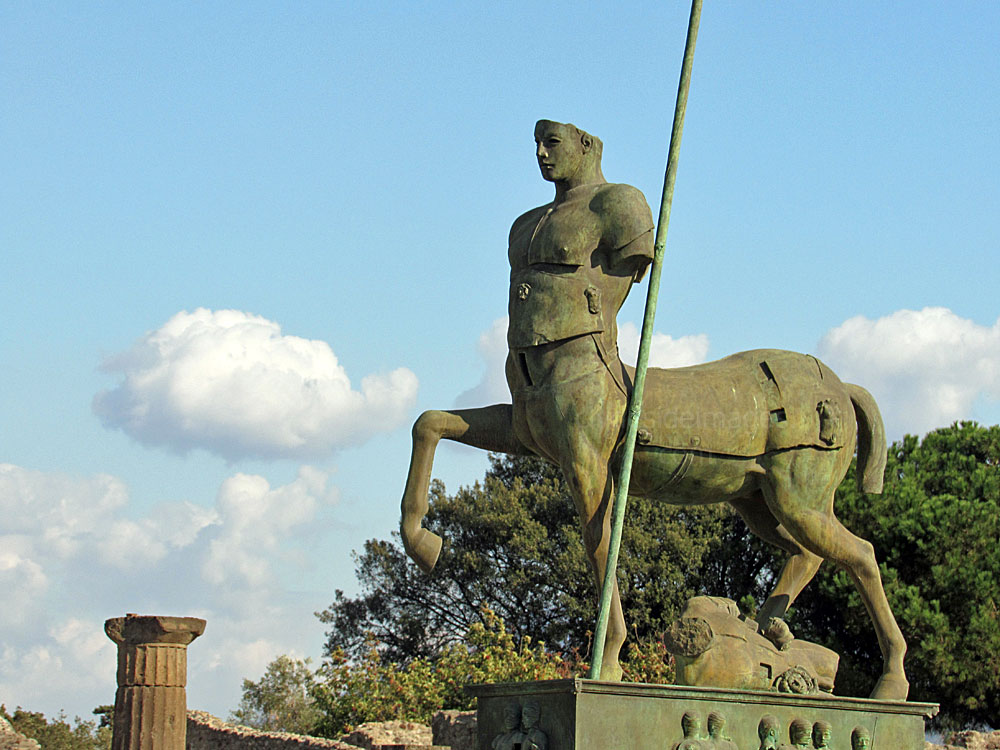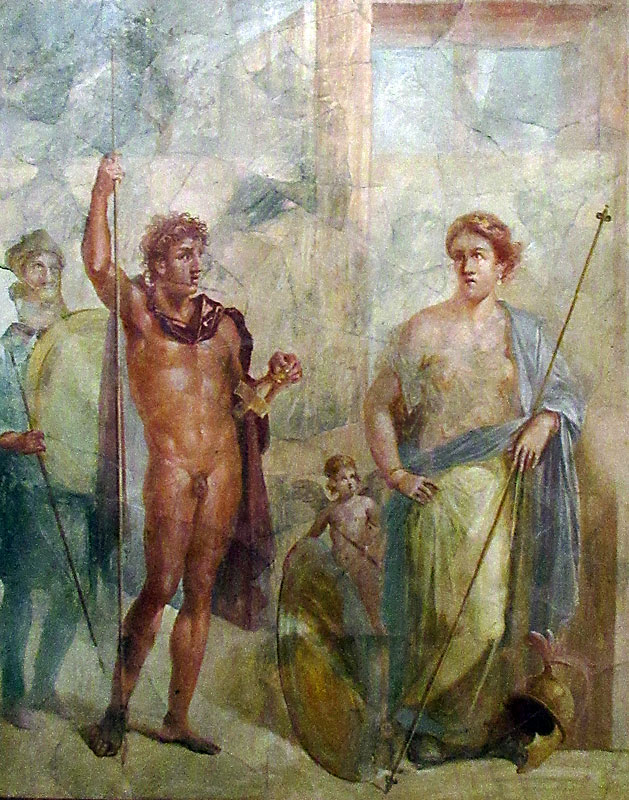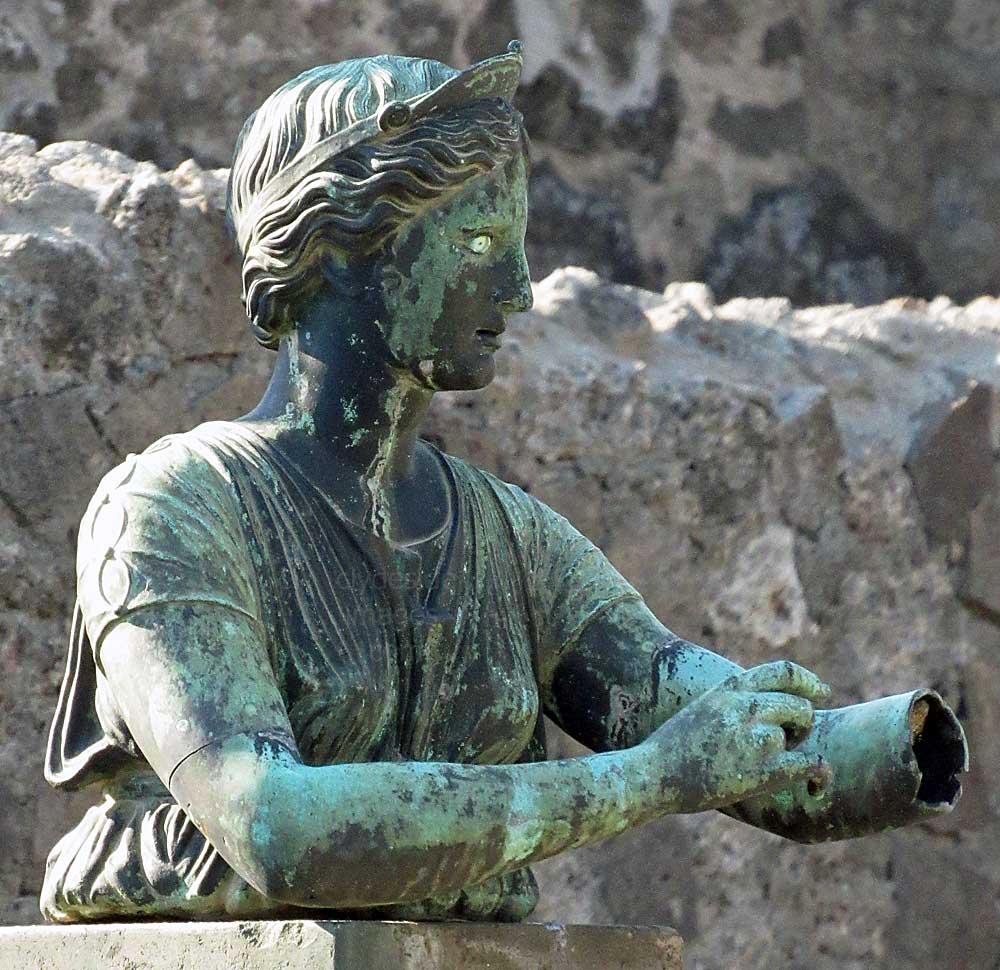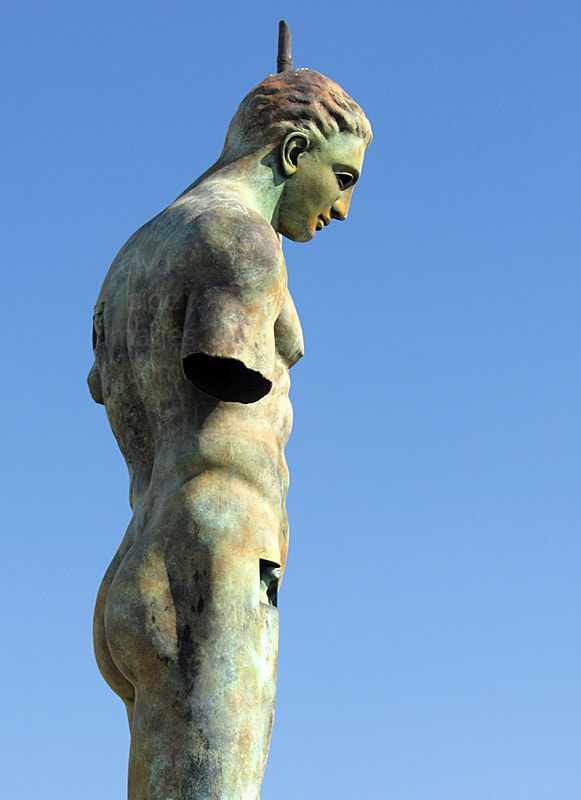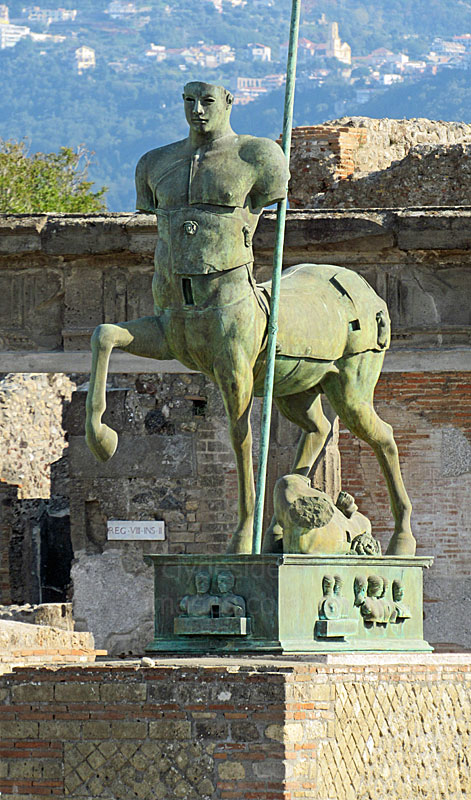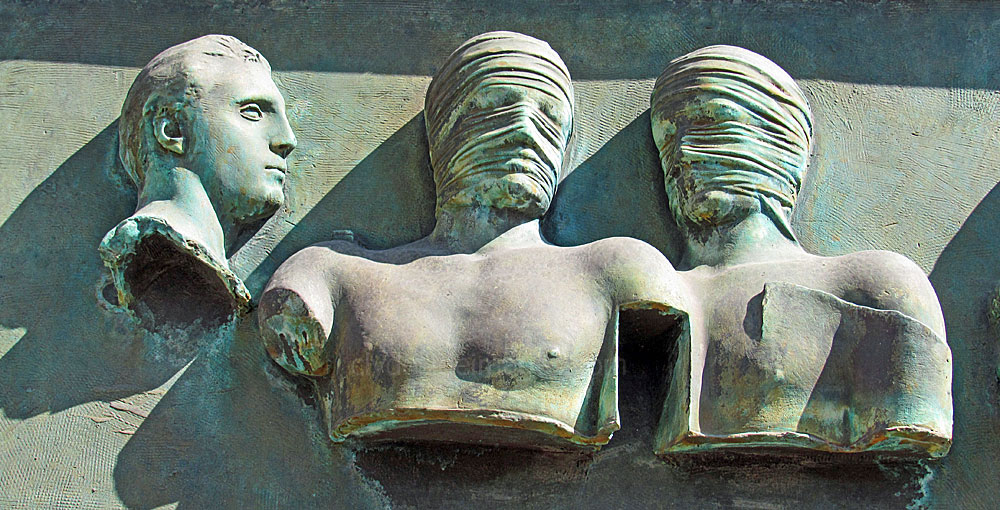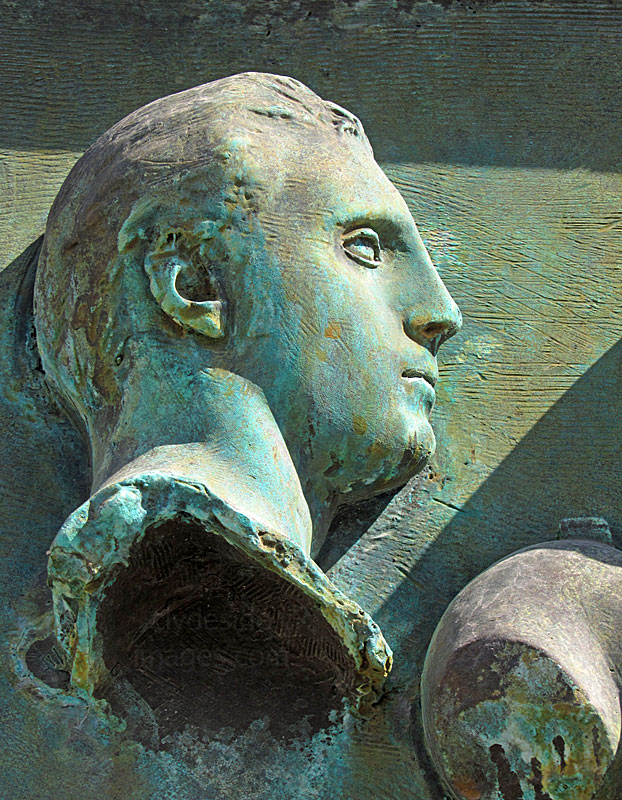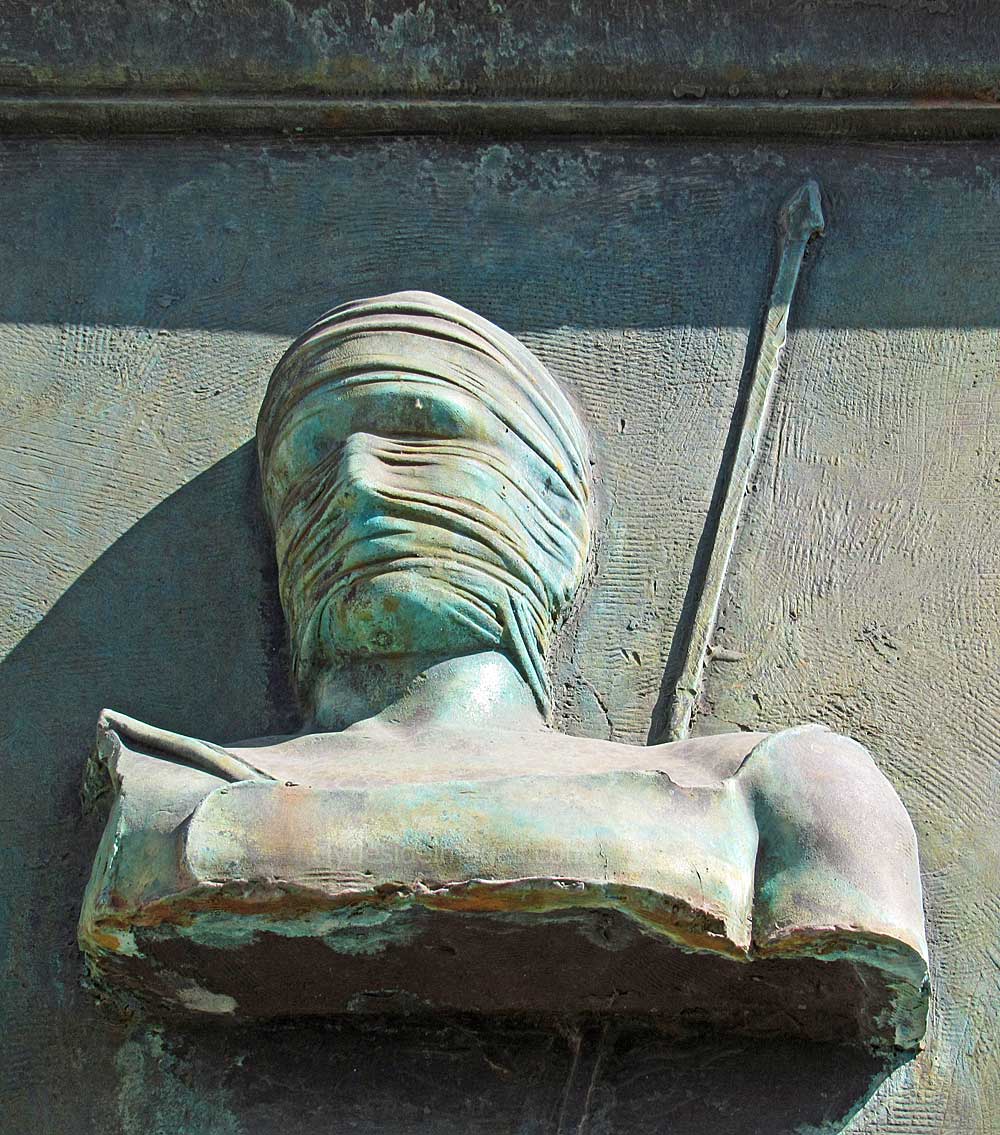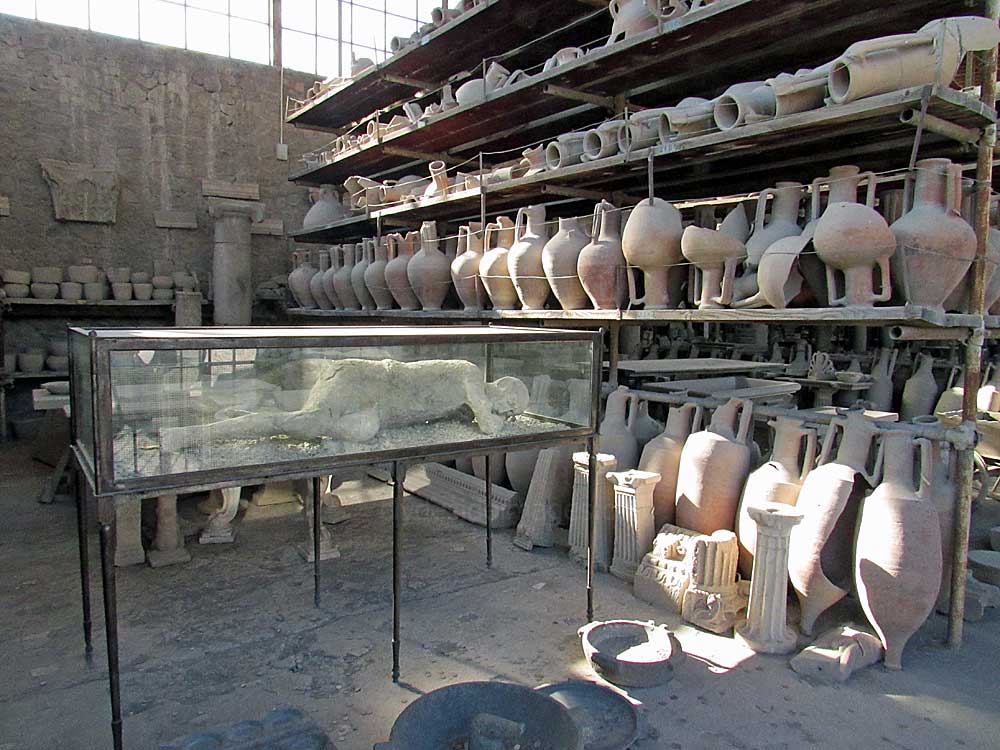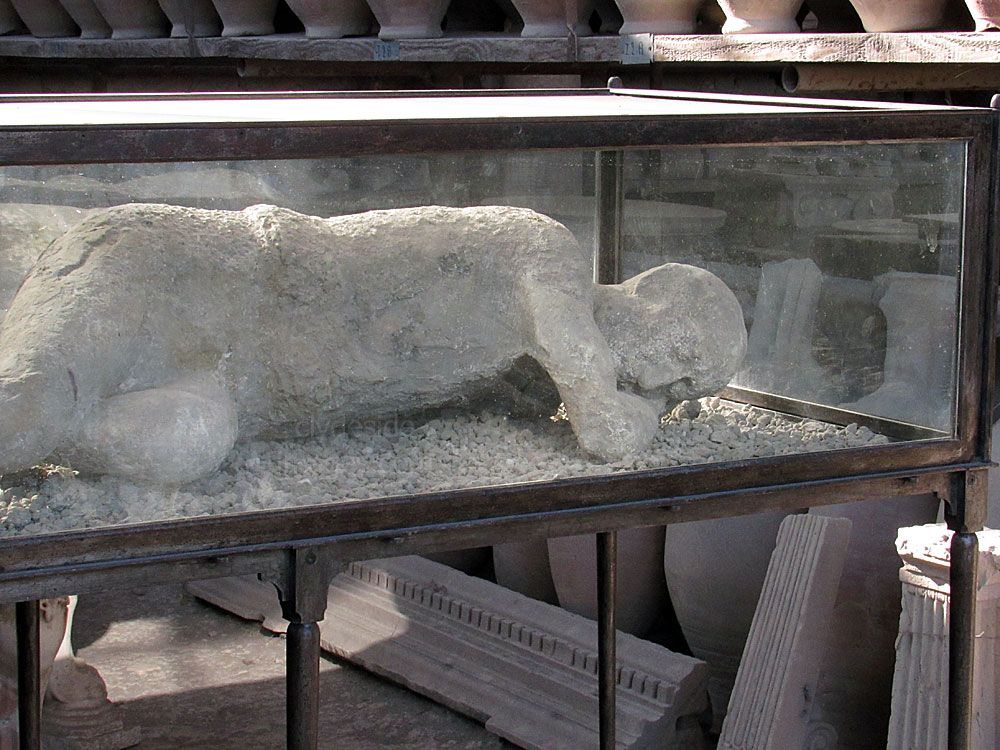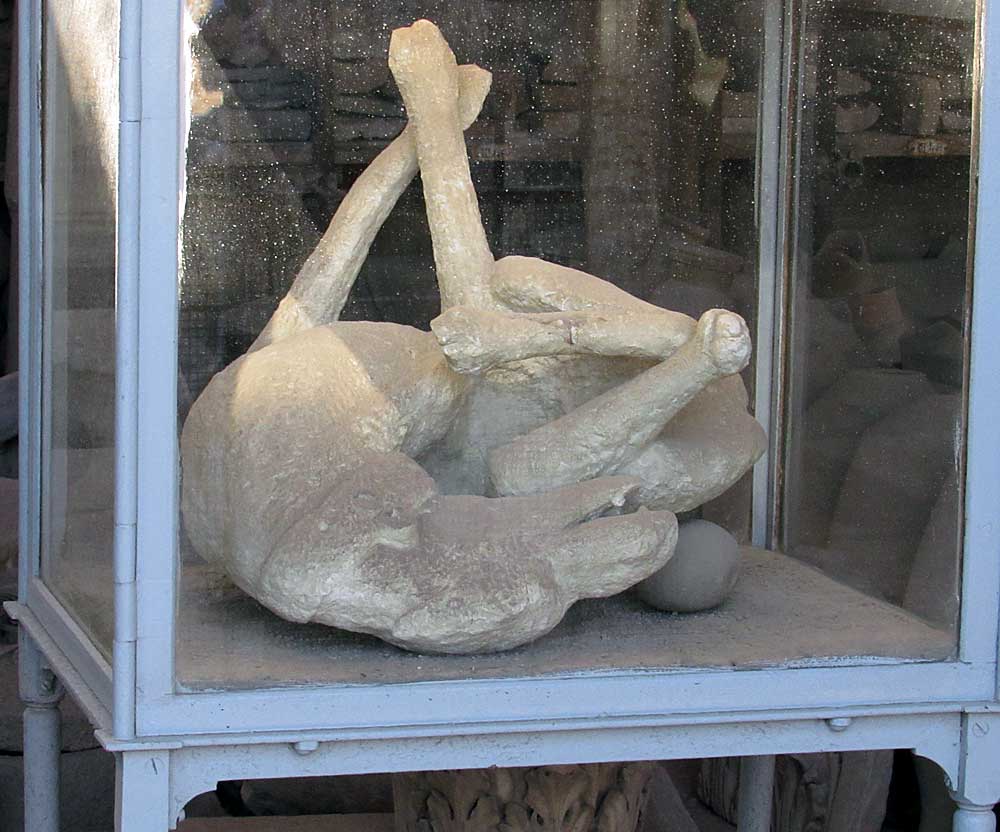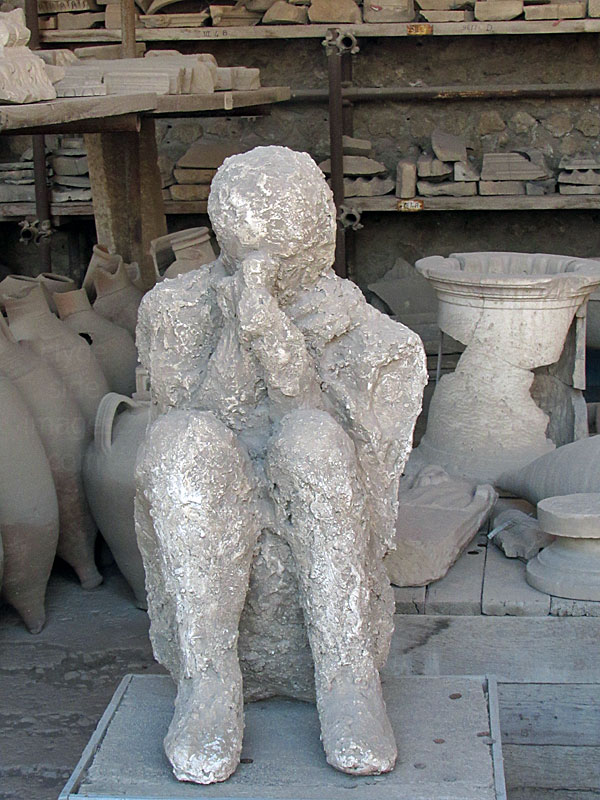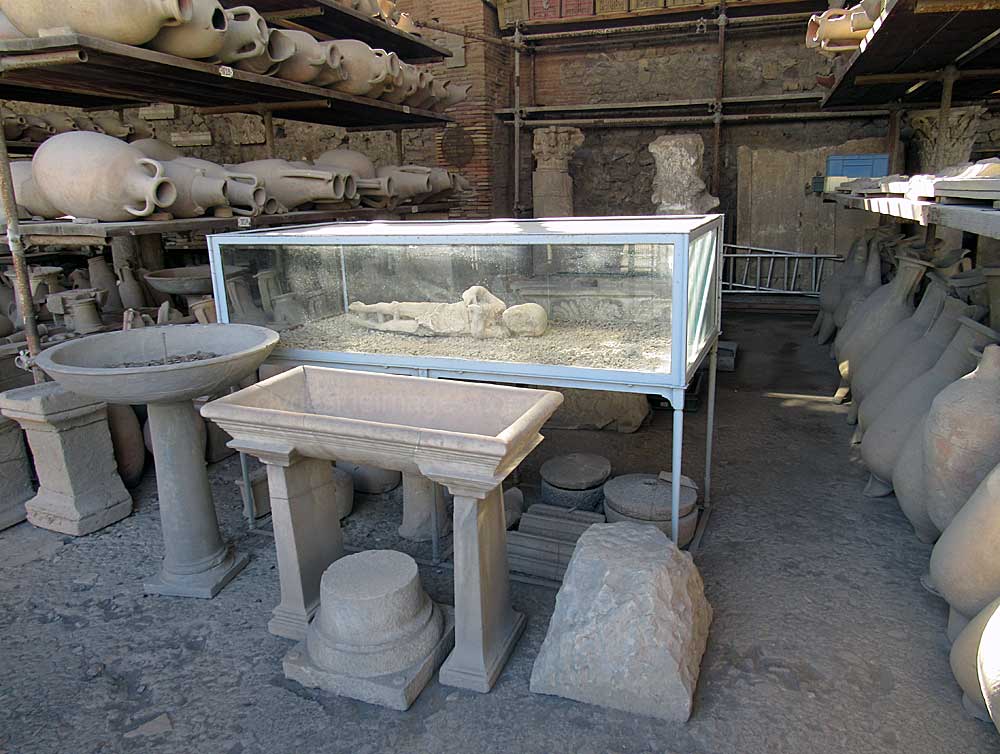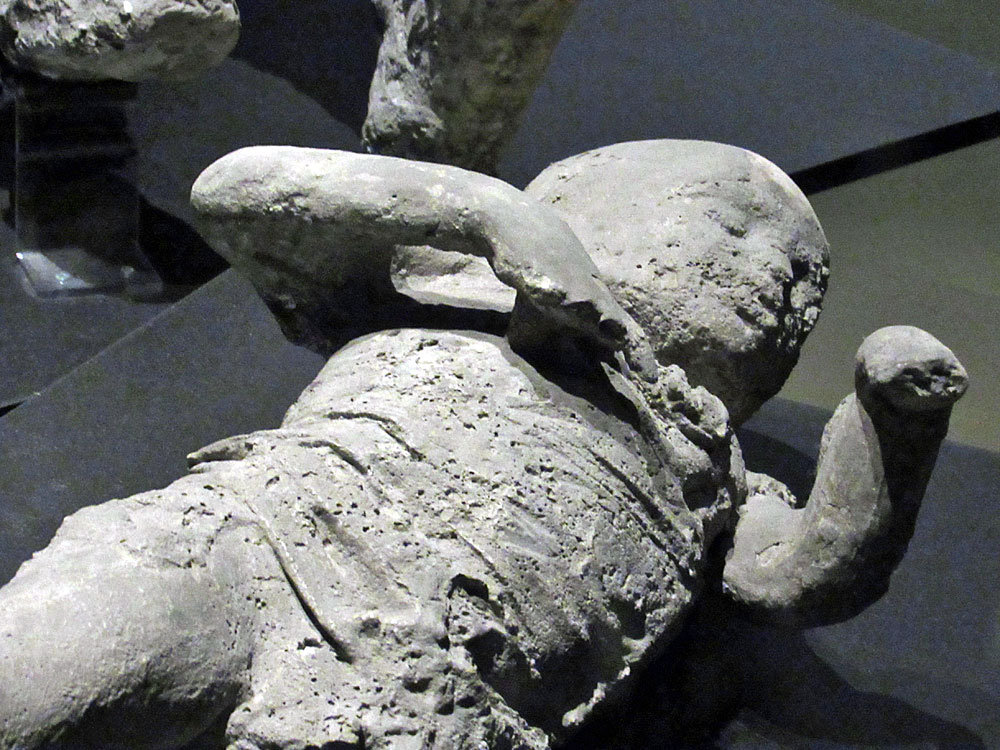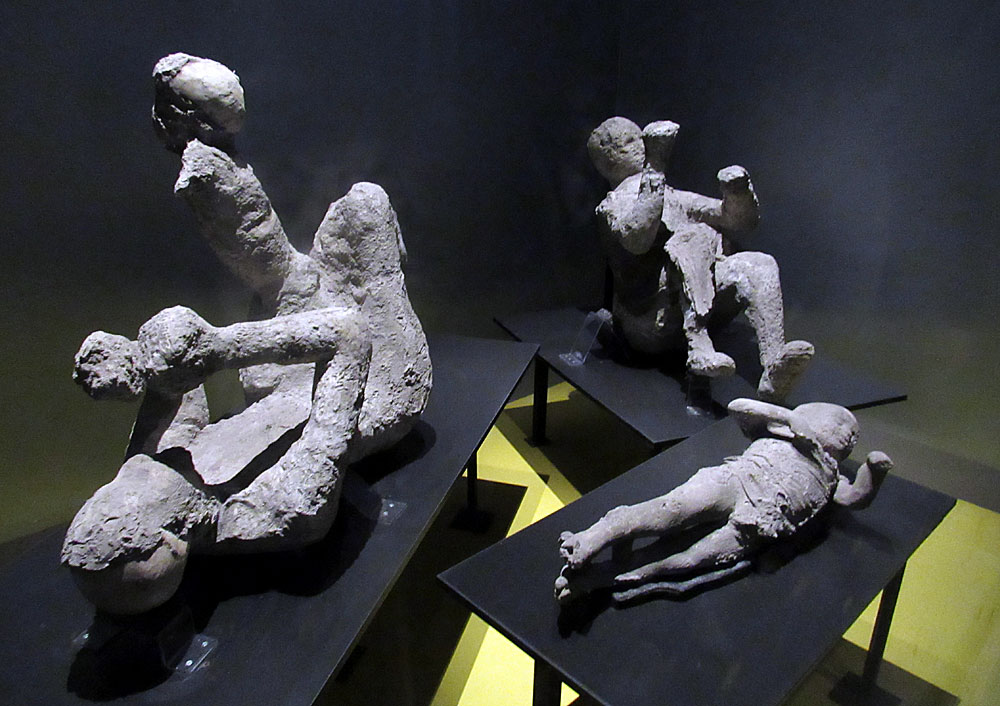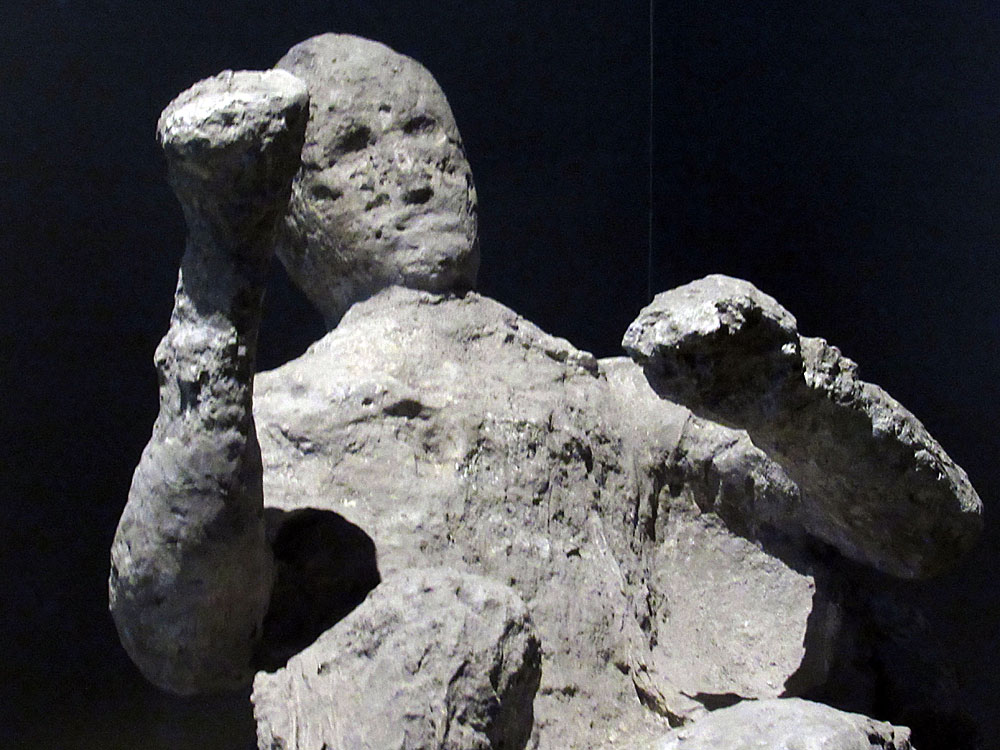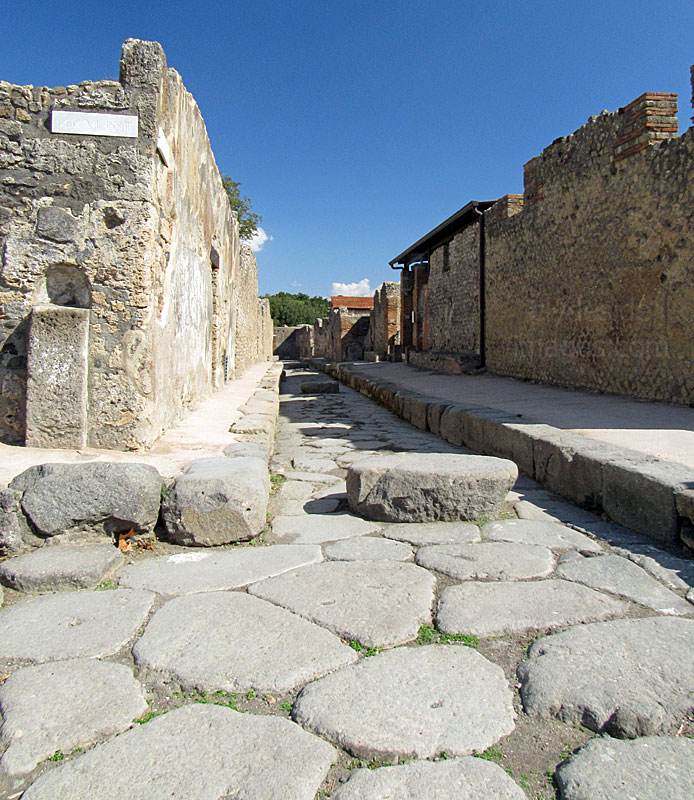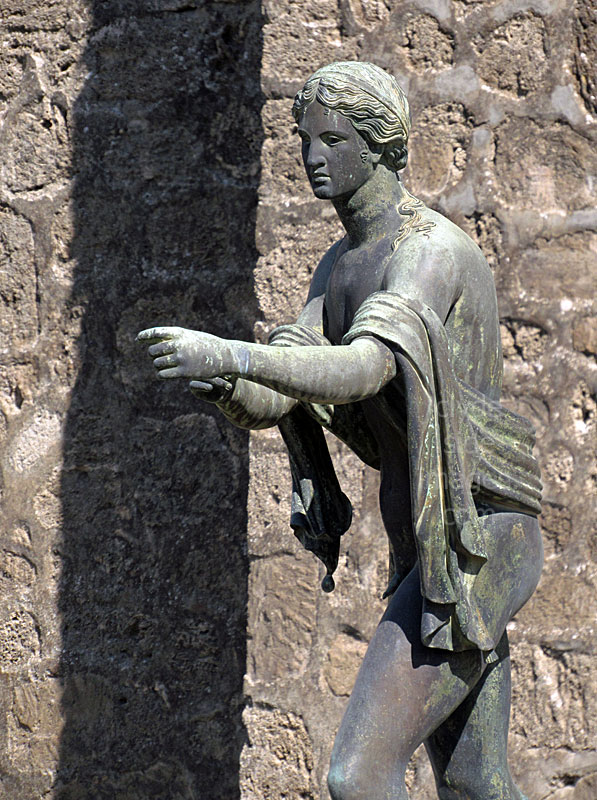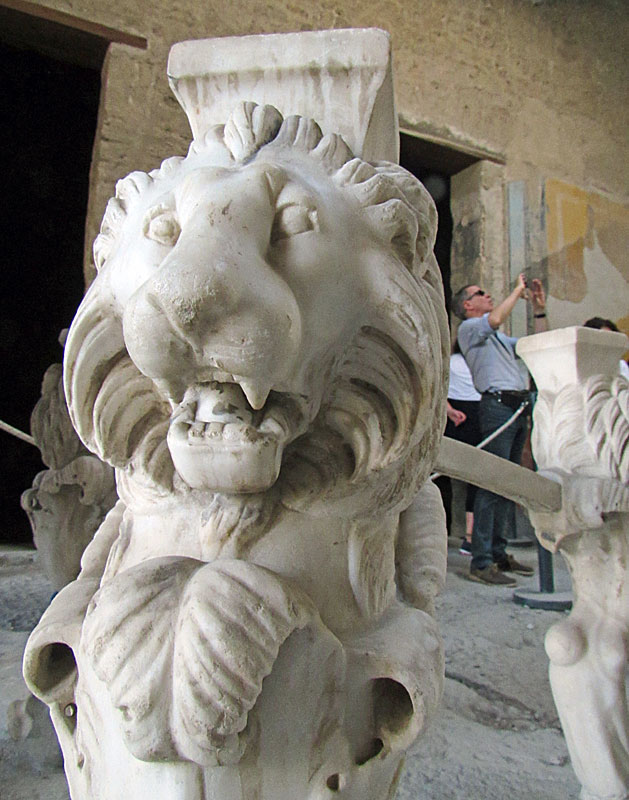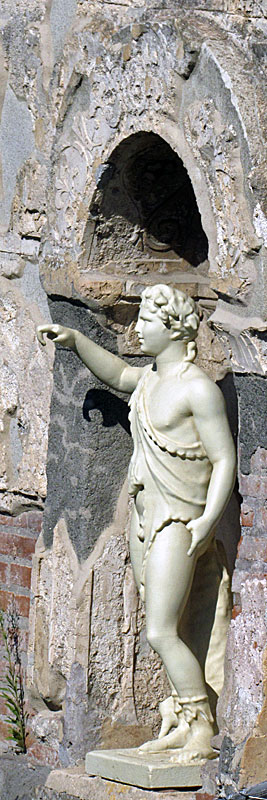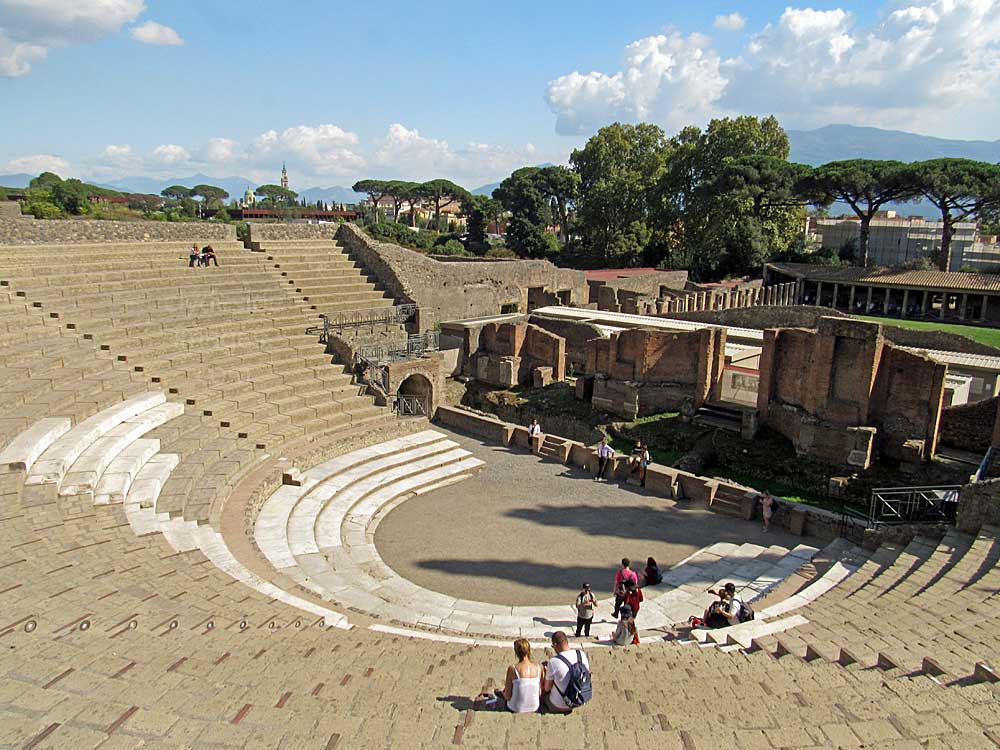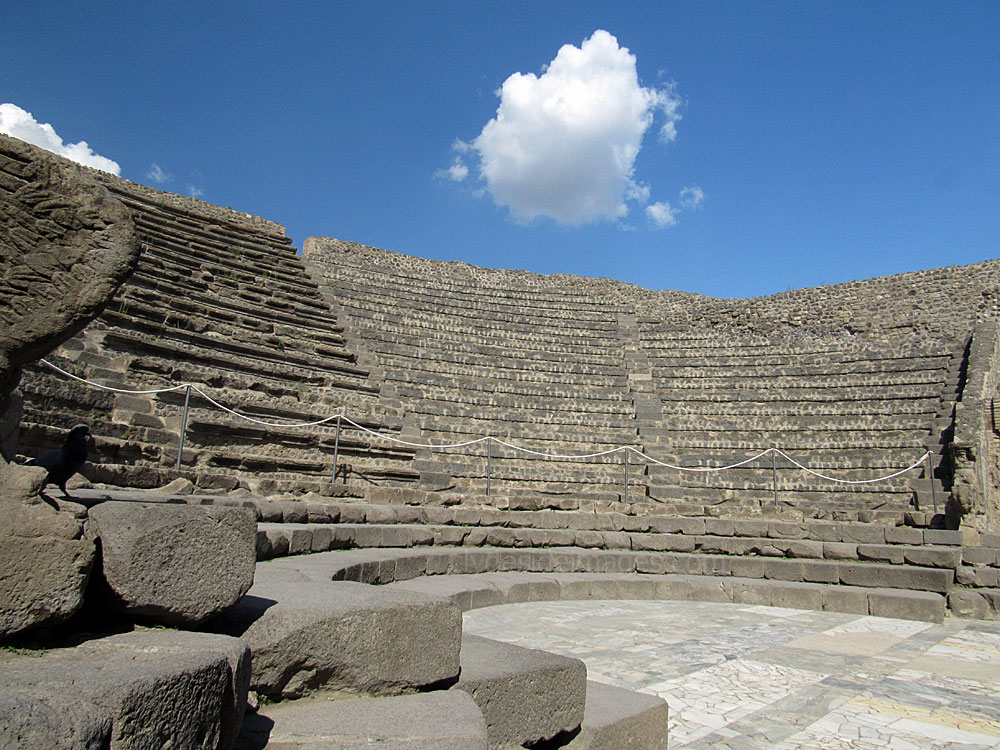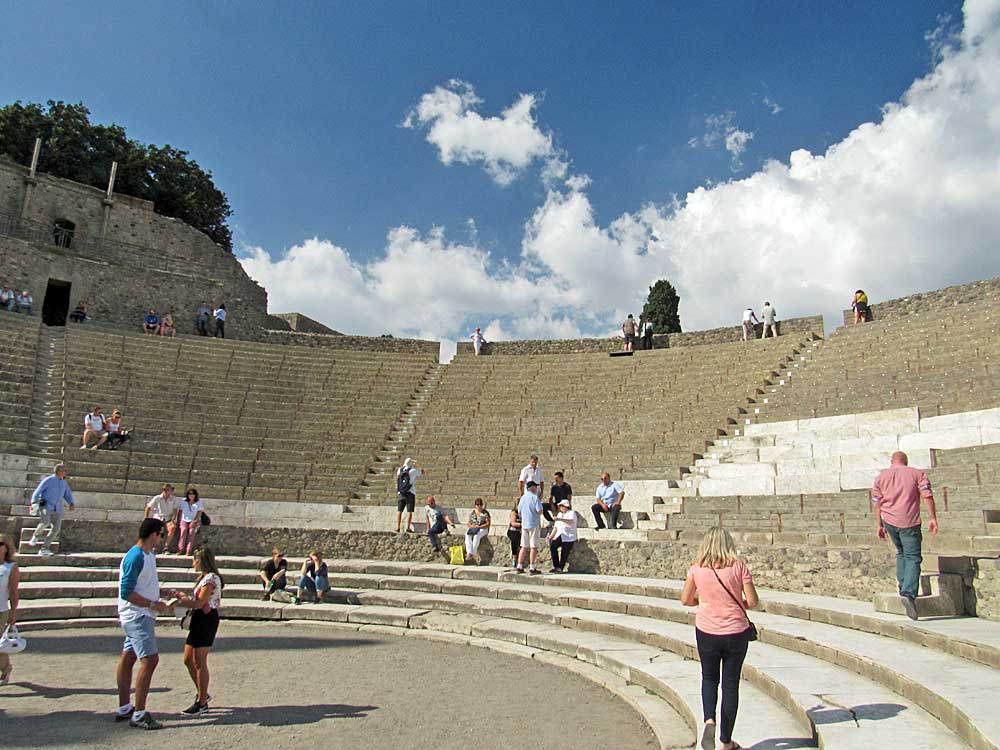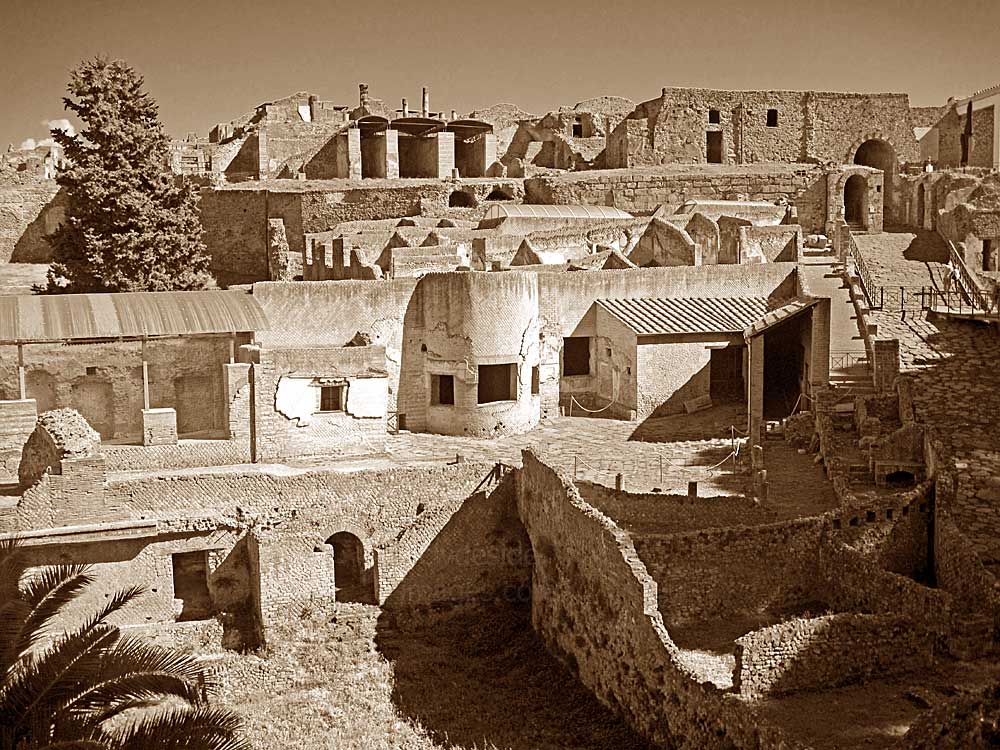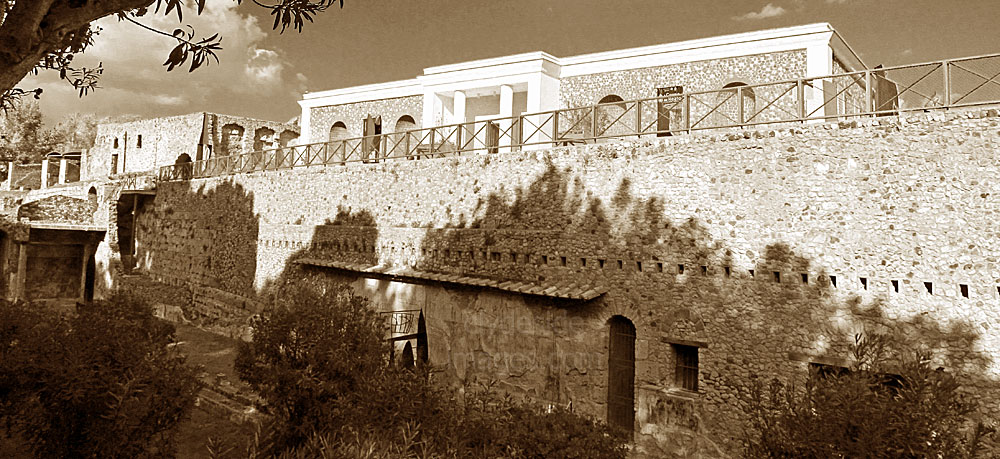Italy
Pompeii
The archaeological site of Pompeii has UNESCO World Heritage Site status and is one of the most popular tourist attractions in Italy, with approximately 2.5 million people visiting each year. The best time to explore these world famous ruins is in the afternoon as the majority of organised tours get there in the morning and leave before lunchtime. My wife and I arrived just before 1pm, when there was no queue for tickets and you could walk straight in.
Pompeii is easily reached by train from Naples or Sorrento, a journey time of only 30 minutes from the latter. The main entrance to the site is only a few hundred metres from Pompeii Scavi Railway Station and comprises an information block where you can buy tickets and book an official guide and a separate covered turnstile for access.
As you walk up the first ramp to pass through the city walls, there is a small museum and bookshop with some artifacts on display and a theatre showing a film outlining the history of the city, its destruction and subsequent discovery.
Researchers believe that the settlement was founded in the 7th or 6th century BC by the Osci or Oscans, and came under the domination of Rome in the 4th century BC. In 80 BC Pompeii was conquered and became a Roman colony after it joined an unsuccessful rebellion against the Roman Republic. One of the most remarkable aspects of Pompeii nowadays is its enormous size, which contrasts with the compact nature of the archaeological site at Herculaneum (Link)*, and this despite the fact that only two-thirds of the area of interest at Pompeii has been excavated.
Busts of some of the principal archaeologists involved in the excavations at Pompeii are displayed outside the museum.
A paved street: Pedestrians used the blocks in the road (just beyond mid-distance in the above shot) as stepping stones to cross the street as an alternative to placing their feet on the lowest level of the thoroughfares as these also served as Pompeii's drainage and sewage disposal system. The spaces between the blocks let chariots and carts pass - a Roman version of the pedestrian crossing!
In AD 62, just 17 years before Vesuvius erupted, the city was struck by a major earthquake. Damage was extensive and much of the city`s 20,000-strong population was evacuated. Fortunately, many residents had not returned by the time the volcano blew, but even so 20,000 men, women and children perished and they, along with the city`s buildings, remained hidden under the debris for centuries.
It wasn`t until 1594 that the architect Domenico Fontana stumbled across the ruins while building a canal, however, it wasn`t until 1746 that Spanish engineer Rocque Joaquin de Alcubierre carried out the first proper excavations.
Pompeii, along with Herculaneum and many villas in the surrounding area, was almost completely destroyed and buried under 4 to 6 metres (13 to 20 ft) of volcanic ash and rock when Mount Vesuvius erupted in AD 79. The death toll was catastrophic and new research indicates that heat, rather than suffocation was mainly responsible.
A large number of artifacts from the buried cities of Pompeii and Herculaneum are on display in the Naples National Archaeological Museum.
Several more plaster cast victims (below) are on display in the museum near the main entrance.
Many of the interiors have floor mosaics and wall murals many, like the buildings, in a remarkable state of preservation.
The last section comprises some sepia toned general views of the site...
